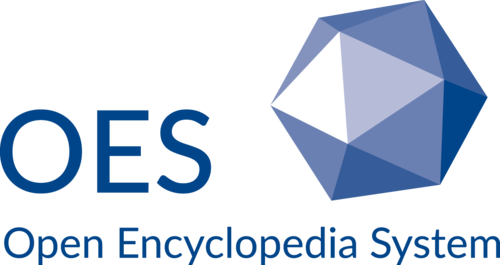Publishing online encyclopedia using OES
Guiding principles of the software design
Our main concepts and visions are predominantly led by four principles in order to ensure the sustainability, adaptability, longevity and usability of the OES software: modularity, openness, integrity of data and interconnection. OES is a generic software system that is web-based and features a modular plug-in architecture.
Objectives and target group
Its main purpose is to assist users in publishing and maintaining online reference works that are tailored to users’ needs. The main target group of OES are scholars, editors, publishers and librarians in the Humanities and the Social Sciences. The basic approach of OES is to provide a highly configurable and flexible software system that enables users to adjust each level of the software system and applied workflows, so that users are not obliged to adapt to standard software schemes. With OES, users are invited to create an academic online encyclopedia on their own, organize a distributed network of scholars, manage and adjust editorial workflows and engage and manage their online community.
Create an academic online encyclopedia
There are many different ways of creating an academic online encyclopedia, which is not only proved by the various use cases of OES, but the standard way might be as follows:
-
Convene an editorial board. An editorial board can be comprised of one or more editors setting the encyclopedia's goals in terms of content, openness, workflows, peer review model etc. The editorial board is the political, organisational and strategic basis of an (online) encyclopedia.
-
Conceptualize (design) and define the key aspects of your online encyclopedia. The second step should be the basic conceptualization of the (online) encyclopedia, in which the underlying data model, content, structure are defined. Additionally, the editorial board decides to specify the key aspects of the online encyclopedia (see below). Decisions made here will be incorporated in the implementation and configuration of the OES software.
-
Call for Contributions. Thirdly, an online encyclopedia is nothing without content. Therefore, professional authors need to be called for in order to have encyclopedic content produced. OES provides an integrated module "Call for Papers", which can be configured as a semi-automatic integration of the backend.
-
Publish. Lastly, encyclopedic content can be published, indexed, cross referenced and enriched with multimedia and metadata. OES provides all necessary functions and standards in state-of-the-art academic publishing.
Key aspects
There are major key aspects in publishing academic online encyclopedias that define the way how they are being created, maintained and published. In a way, these aspects and how they are configured are shaping an encyclopedia.
- Publication Workflow. What kind of workflows do exist and how are they organised?
- Participation Model. Who is allowed to change what? Who are the gatekeepers of an online encyclopedia?
- Peer Review Model. How is the process of peer review organised?
- Community. A community that can be comprised of members with many different roles, e.g. editors, authors, readers, librarians. Each role can have various levels of accessibility to read, edit, rearrange content of the encyclopedia and discuss it online. OES provides a set of tools to configure an encyclopedia's community engagement and management.
The key models and workflows in publishing an online encyclopedia are interrelated and subject to change over the course of time.
